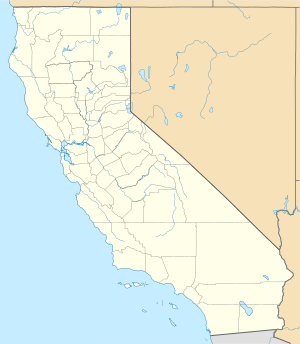San Pablo Bay National Wildlife Refuge facts for kids
Quick facts for kids San Pablo Bay National Wildlife Refuge |
|
|---|---|
|
IUCN Category IV (Habitat/Species Management Area)
|
|
 |
|
| Location | Napa County, Solano County, Sonoma County, California, United States |
| Nearest city | Vallejo, California |
| Area | 13,190 acres (53.4 km2) |
| Established | 1970 |
| Governing body | U.S. Fish and Wildlife Service |
| Website | San Pablo Bay National Wildlife Refuge |
The San Pablo Bay National Wildlife Refuge is a special protected area in California. It was created in 1970 to help protect nature. This refuge covers about 13,190 acres (53.4 km2) of land and water.
It stretches along the northern edge of San Pablo Bay. You can find it from the Petaluma River all the way to Tolay Creek, Sonoma Creek, and ending near Mare Island.
Contents
What is the San Pablo Bay Refuge?
The San Pablo Bay National Wildlife Refuge is a large natural area. It protects important wetlands and water habitats. These areas are vital for many plants and animals. The refuge is managed by the United States Fish and Wildlife Service. They work to keep the environment healthy.
Habitats in the Refuge
The refuge has many different types of natural homes for wildlife. These include:
- Open water areas
- Mud flats
- Tidal marshes
- Estuaries (where fresh and salt water mix)
- Seasonal wetlands that fill with water at certain times
- Managed wetlands that are controlled by people to help wildlife
The refuge has the biggest area of pickleweed plants in the northern San Francisco Bay. Pickleweed is a special plant that grows well in salty marsh areas.
Why are San Pablo Bay Wetlands Important?
Long ago, the wetlands around San Pablo Bay were huge. They were some of the largest tidal marshes on the Pacific Coast. But over time, people changed a lot of these areas. About 85% of the original tidal marshes in San Pablo Bay have been changed. This happened because of things like:
- Building dikes (walls to hold back water)
- Draining water away
- Filling in land
- Using land for farming and building
Protecting the remaining wetlands is very important. They act like natural filters for water. They also provide homes for many creatures.
Animals of San Pablo Bay Refuge
The refuge is a busy place for wildlife. Millions of migratory birds visit here. These birds travel long distances each year.
Birds of the Refuge
- Shorebirds: Many different kinds of shorebirds stop here during their long journeys.
- Waterfowl: Ducks, geese, and other water birds use the refuge.
- Canvasbacks: The refuge is home to the largest group of Canvasback ducks on the west coast during winter.
Endangered Species
The refuge also protects animals that are in danger. These are called endangered species. They live in the refuge all year round.
- Ridgway's Rail: This is a special bird that lives in the marsh.
- Salt Marsh Harvest Mouse: This small mouse also makes its home in the salty marsh areas.
Protecting these animals helps make sure they don't disappear forever.
Visiting the Refuge
The San Pablo Bay National Wildlife Refuge offers some ways for people to visit. You can enjoy nature and see the amazing wildlife. The refuge works to balance protecting nature with allowing people to learn about it.
![]() This article incorporates public domain material from websites or documents of the United States Fish and Wildlife Service.
This article incorporates public domain material from websites or documents of the United States Fish and Wildlife Service.




